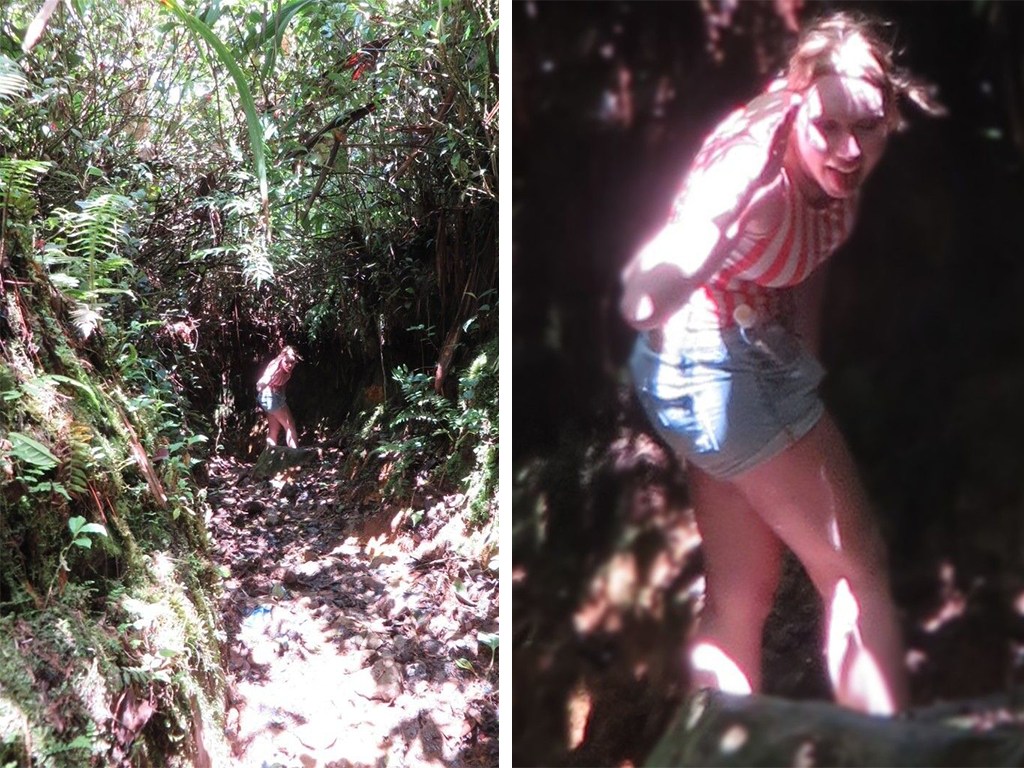On April 1, 2014, two young Dutch women—22-year-old Kris Kremers and 21-year-old Lisanne Froon—set out on what was supposed to be a day hike through the lush, cloud-covered mountains of Panama. Both were adventurous, bright, and full of dreams. Kris had recently graduated with a degree in cultural social education, while Lisanne had completed her studies in applied psychology. They had traveled to Central America not just to enjoy the beauty of Panama but also to volunteer with local children, learn Spanish, and experience life in a different culture.
That morning, the pair were last seen walking along the El Pianista trail, just outside the mountain town of Boquete. The trail, though scenic and often traveled, is known for its unpredictability: it begins as a well-marked path but quickly narrows into dense jungle, where steep ravines, thick vegetation, and sudden weather changes can turn a simple hike into a dangerous ordeal. Kris and Lisanne had only planned to be out for a few hours, and they carried light supplies. But neither of them would ever return.
At first, there was no panic. It wasn’t unusual for travelers to spend extra time exploring the highlands. But when they failed to show up for appointments and classes the next day, their host families became concerned. Within 48 hours, the alarm was raised. Police, local guides, and eventually Dutch investigators launched an intensive search of the area, combing the trail with dogs, helicopters, and ground teams. Yet days turned into weeks with no trace of the women. It was as if they had vanished into the jungle.
Then, in late April, a breakthrough came. A local woman discovered a blue backpack along the bank of a river near the village of Alto Romero—over 10 miles from where the women had started their hike. Inside, neatly packed and surprisingly dry despite the tropical rains, were two pairs of sunglasses, $83 in cash, Lisanne’s passport, a water bottle, two bras, and both of their phones. Most chilling of all was a small Canon camera, its memory card intact.
The photos told a fragmented, haunting story. Early images showed Kris and Lisanne smiling on the trail, clearly enjoying their hike. But days later, the photos shifted dramatically: more than 90 nighttime images were taken, many of them seemingly random shots of the jungle in pitch black, some with flash illuminating rocks, branches, and deep ravines. One photo appeared to show the back of Kris’s head, with blood on her temple. Others seemed almost deliberate, as if signaling for help, or documenting their surroundings for rescuers who might never find them.
The phones provided more eerie details. Records showed that beginning just hours after their hike started, the women repeatedly tried to dial emergency numbers—112 and 911—using both devices. None of the calls ever connected, likely due to the lack of cell service deep in the mountains. The attempts continued for days, suggesting they had survived for at least a week while desperately trying to summon help. Then came a baffling twist: on April 6, one phone was turned off and never used again. The other continued to be powered on sporadically until April 11, when it too went silent forever.
Soon after, investigators made a grim discovery. A boot containing Lisanne’s foot was found along the riverbank, not far from the backpack. Later, fragments of bones belonging to both women were recovered—Kris’s pelvic bone and Lisanne’s rib bones among them. Tests confirmed they were human remains, but provided no clear explanation for how the women had died. Some of the bones were remarkably clean, as though bleached by the sun or processed in some way, while others showed no signs of trauma.
What really happened to Kris and Lisanne remains one of the most enduring modern mysteries. Theories abound, and each one raises more questions than answers.
The most widely accepted explanation is that they became lost after wandering beyond the marked portion of the trail. Once disoriented in the dense jungle, they may have slipped on a ravine or been swept away by rising rivers, succumbing to injuries or starvation as they struggled to survive. The photos and phone records could support this, painting a tragic picture of two young women trying desperately to cling to life.
But skeptics point to the unusual state of the evidence. Why was the backpack found in such good condition, with electronics dry and undamaged, despite being left in one of the wettest environments on earth? Why were the belongings neatly packed, instead of scattered as one might expect from an accident? And why were the bones of Kris reportedly lighter in color, almost unnaturally clean, compared to Lisanne’s remains? Some believe these details suggest human interference—perhaps foul play, or even an intentional cover-up.
Local residents and online sleuths have speculated about darker scenarios: an encounter with criminals in the jungle, an accidental death followed by panic and concealment, or involvement by someone who knew the terrain well. None of these theories have been proven, and officials in Panama ultimately classified the deaths as an accident. Still, for many, the unanswered questions refuse to fade.
In the years since, the case of Kris Kremers and Lisanne Froon has become the subject of documentaries, podcasts, and endless internet discussions. People around the world are haunted by the final images from their camera and the chilling timeline pieced together from their phones. It’s not just the tragedy of two young lives cut short, but the eerie sense that the truth is still hidden somewhere in the dense Panamanian jungle—or perhaps in details overlooked during the investigation.
For their families, the pain never truly ended. Kris’s parents and Lisanne’s loved ones traveled to Panama repeatedly, pressing authorities for answers and conducting their own searches with the help of local guides. They have spoken publicly about the agony of knowing so much and yet so little, of seeing photos of their daughters alive one moment and reading reports of bones the next. The lack of closure is its own kind of torment, a wound that refuses to heal.
Ultimately, the story of Kris Kremers and Lisanne Froon is more than a mystery—it is a cautionary tale about the fragility of safety when traveling, the unforgiving power of nature, and the thin line between adventure and tragedy. Their story underscores how quickly a dream trip can descend into horror, and how even in our age of technology, there are still places where help cannot reach in time.
That final photo of Kris, taken against the backdrop of Panama’s towering trees, lingers like a ghost. It shows a young woman unaware of the fate that awaited her, caught in the timeless beauty of the jungle just before it became her tomb. For the world, it is a chilling reminder that some questions may never be answered, and some mysteries are destined to remain in the shadows.
Even today, more than a decade later, people continue to ask: What really happened on the El Pianista trail? Were Kris and Lisanne victims of an unforgiving environment, or something more sinister? Until those questions are resolved, their disappearance will remain one of the most unsettling enigmas of the 21st century.

